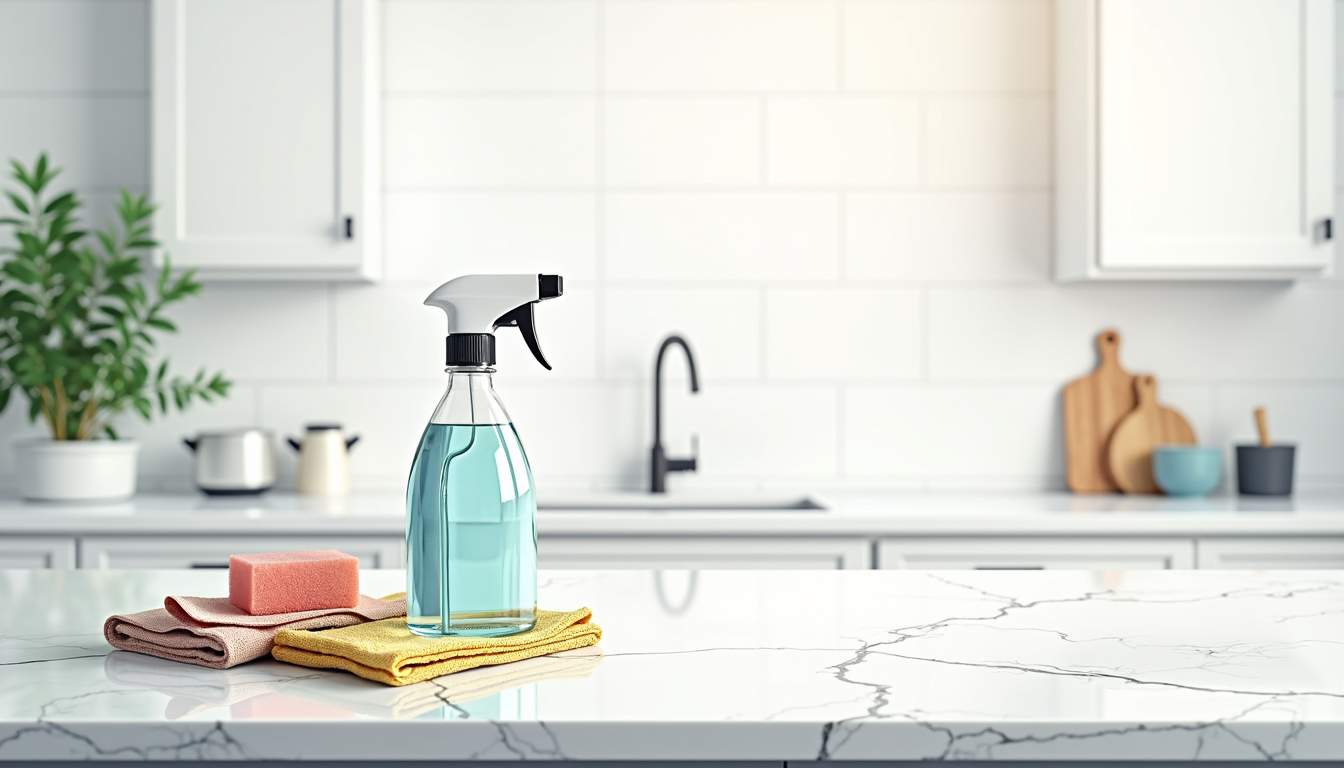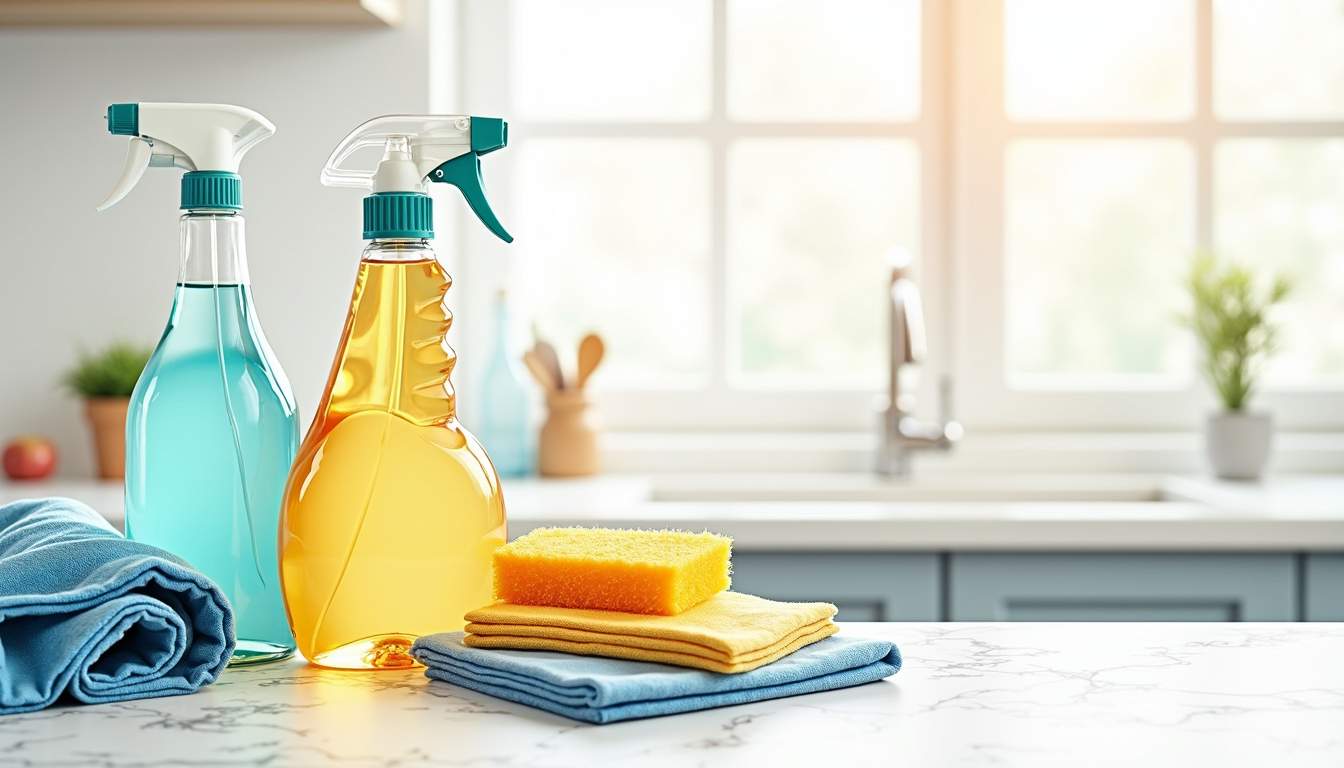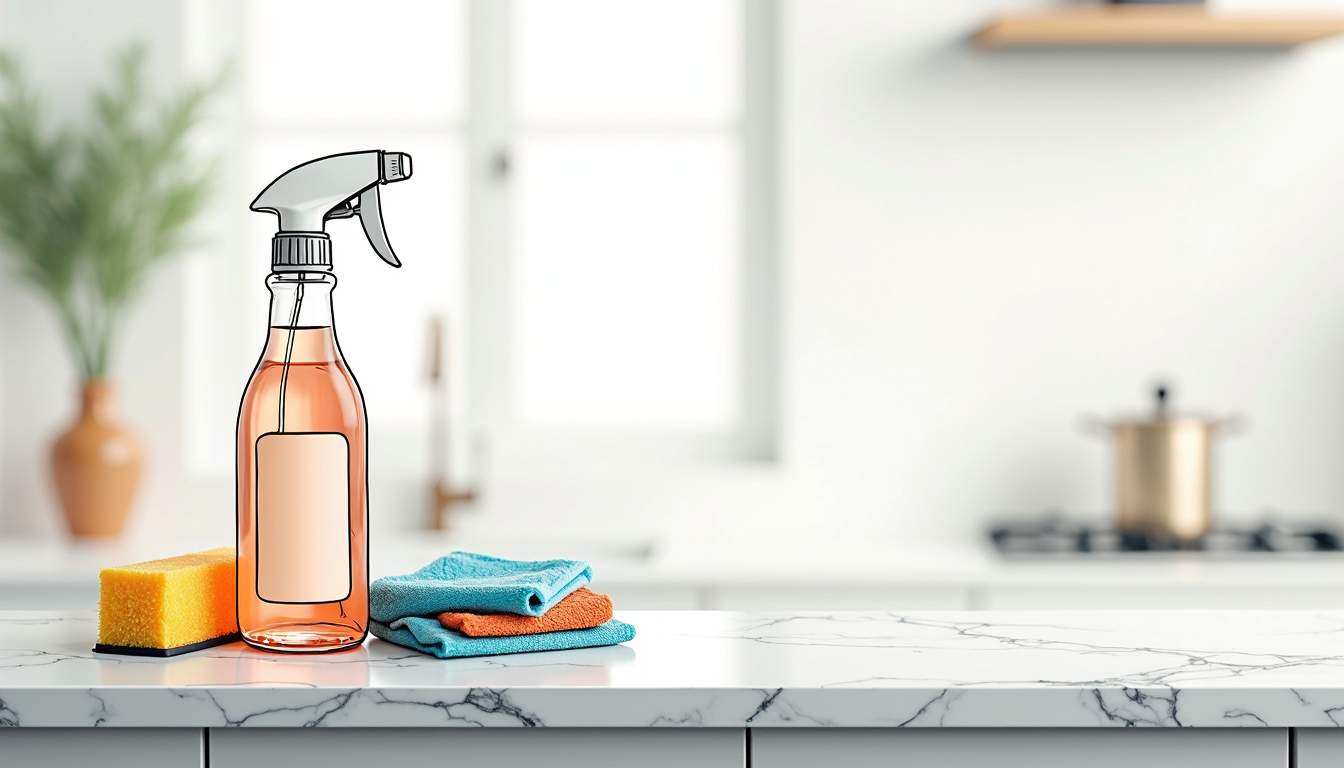Your complete guide to keeping quartz worktops sparkling for years to come
There’s nothing quite like the sleek shine of a quartz worktop. Stylish, durable, and effortlessly elegant, quartz has become a favourite choice in UK kitchens because of its aesthetics and low maintenance. But even the toughest surfaces need a little TLC to keep looking their best.
At Worktop Hub, we want your worktops to look as stunning as the day they were installed. That’s why we’ve put together a complete guide on how to clean quartz worktops safely and effectively, plus a few pro tips to extend their lifespan.
Why Quartz Is So Popular
Quartz worktops are made from around 90 to 95% natural quartz crystals, bound with resins and pigments to create a worktop surface that has many benefits. Quartz is
- Non-porous and resistant to stains
- Scratch- and chip-resistant
- Uniform in colour and pattern
- Available in a wide range of modern finishes

How to Clean Quartz Worktops
Keeping quartz spotless doesn’t require fancy products, just some consistency in your cleaning routine. Here’s a look at your daily cleaning requirements, deeper cleaning tips, and what to avoid!
Daily Cleaning Routine for Quartz
After using your quartz worktop, it’s best to give it a quick wipe down to keep your kitchen hygienic and prevent any long-term damage. To clean your quartz, you’ll need:
- Warm water
- Mild, pH-neutral dish soap
- A soft microfibre cloth
Here’s how you can give your quartz worktop a quick clean after use:
- Mix a few drops of dish soap into warm water.
- Dip your cloth in and wring it out.
- Wipe the surface in circular motions to lift residue.
- Rinse with clean water.
- Buff dry with a fresh microfibre cloth for a flawless finish.
Worktop Hub tip: For a quick shine boost, lightly mist your quartz with a glass cleaner and buff until gleaming.

Deep Cleaning and Stain Removal for Quartz
Even though quartz resists stains, it’s smart to act quickly when spills happen, especially when it’s high-risk spills like red wine, coffee, or curry.
- For dried spills: Soften them with warm, soapy water and gently scrape away with a plastic scraper.
- For stubborn marks: A paste of baking soda and water can help lift residue.
- For grease build-up: Use a non-abrasive, quartz-safe degreaser near hobs or sinks.
What to Avoid When Cleaning Quartz
You can keep your quartz worktop surface flawless for years by steering clear of the following mistakes:
- Abrasive tools like steel wool or scouring pads that scratch. Rather, use a microfibre cloth.
- Strong chemicals, including caustic soda, ammonia, bleach, and hydrochloric acid. These can damage the resin and dull your quartz’s natural lustre.
- Prolonged exposure to heat. Always use trivets or heat mats under hot pots and pans to avoid damage. While quartz can handle the heat of everyday use, sudden temperature changes can cause cracking or discolouration, so protect it whenever possible.
- Cutting directly on your quartz as it’s scratch-resistant, not scratch-proof, so always use a chopping board.
Cleaning Quartz Around the Sink and Hob
The sink and hob are the busiest areas of any kitchen, and quartz makes cleaning them easy. After each use, simply wipe away splashes and grease with mild, soapy water. For oily residues, switch to a dedicated quartz-safe cleaner to prevent buildup.
If you love a seamless design, consider matching quartz splashbacks from Worktop Hub. They’re just as easy to clean and create a luxurious, cohesive finish.
Do Quartz Worktops Need Polishing or Sealing?
No! Unlike granite or wood, quartz worktops don’t need to be sealed. They’re naturally non-porous. However, occasional polishing with a specialist quartz polish can enhance shine.

Long-Term Quartz Care
Think of quartz like a luxury car: low maintenance, but it deserves proper care. Regular cleaning prevents dullness and staining, keeping your investment beautiful for years to come. If your surface starts to lose its sheen, or a stain just won’t budge, professional quartz cleaning can restore it. The benefits of professional restoration include:
- Looks matter: A clean, glossy surface instantly elevates your kitchen.
- Hygiene counts: Non-porous quartz doesn’t harbour bacteria, but restoration is best for long-term hygiene.
- Longevity: Proper care protects your worktop from unnecessary wear and tear.
Quartz worktops are one of the easiest and most rewarding surfaces to maintain, as long as you treat them right. With gentle cleaning, careful handling, and a few smart habits, your quartz will stay stunning for years to come.
Thinking About New Worktops?
Worktop Hub stocks a wide selection of premium quartz, granite, ceramic, acrylic, and compact laminate worktops, all available in styles to suit every kitchen.
Get in touch with the Worktop Hub team today for expert advice, samples, or a free quote.
FAQs
1. Can I use bleach on quartz worktops?
No – bleach is too harsh and can damage the finish or discolour the surface.
2. Is vinegar safe for quartz?
In small, diluted amounts – yes. But rinse immediately to avoid dulling the shine.
3. What if my quartz worktop has lost its shine?
Try a glass cleaner and microfibre cloth. If that doesn’t work, look into a quartz polish or call a professional.
4. Can quartz resist knife scratches?
It’s scratch-resistant, but not scratch-proof. Always use a chopping board.
5. How do I remove dried-on food from my quartz surface?
Soften it with warm soapy water, then gently scrape with a plastic scraper or soft cloth.